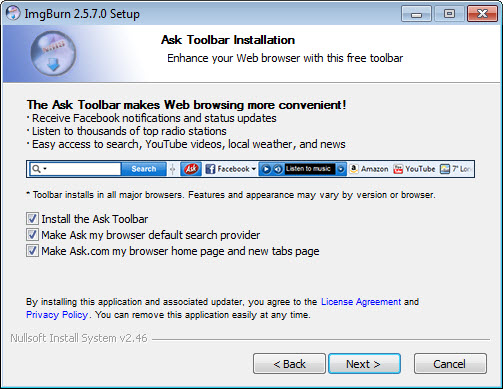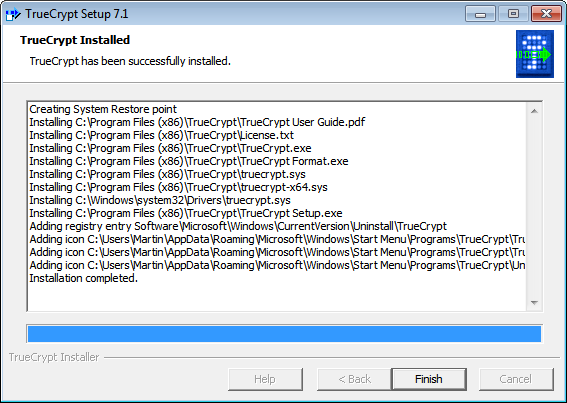Why I Am Losing My Faith in Freeware
Imagine, for a moment, that you publish a site about freeware and free software, and that you’ve been doing it for 10 years. Now imagine telling people about it, acquaintances that you’ve just met at a party. Guess what the first question that they ask you is going to be? The answer, overwhelmingly, is "how do you make money out of that?".
It is actually a very good question, and a question asked by almost everyone who’s made a piece of software available on the internet for free. Not everyone wants to make money off of their free software, but for those who do, there are a handful of main ways to monetize: ads (on the download page or in the app itself), bundleware/crapware (where the installer or app tries to get you to install other software as well), and a simple bait-and-switch, where the software is no longer available for free, with or without a “last freeware version” left behind.
Then, of course, there’s freemium, which gets you to pay for virtual items (or extra features) within the freely accessible software or game.
Nothing new here so far. What is new and what I am proposing in this article is that things are changing in the ‘free software’ world such that the hidden costs of freeware are slowly inching their way upward at the same time as paid apps are becoming cheaper and more affordable, such that using free software is a trade off that sometimes does not make economic sense.
This is not to say that the era of free software is ‘over’ by any means – all you have to do is look at any smartphone or PC and you will likely find the installed base of free software outnumbering the paid counterparts by a mile. But things are changing in a way that even a self-professed “freeware genius” like myself is finding it increasingly more difficult to recommend free software to friends. (Almost).
The following stories are intended to showcase the hidden cost of free software:
When paid is cheaper than free

I am a voracious consumer of audiobooks, and about a year ago or so I decided to do a roundup of available free audiobook apps for Android, in order to compare them and come up with a “Best Free Android Audiobook Player” post to publish on Freewaregenius.
It quickly became apparent that there were two free apps that were the best of the bunch. Both were ad-supported, but neither one was mature (and feature rich) enough for my taste. Because I take my audiobooks very seriously, I tried out a paid app that looked really good (“Listen Audiobook Player” which at the time was priced at a mere $0.99), and found that it was significantly better than any of the ‘free’ ad-supported options, a lot more mature, and was actively being developed by its author as one of his main projects.
And this is where it struck me that it made absolutely no sense to recommend a “best of” free audiobook app for Android (at least at the time). It didn’t make any sense to suffer through ads strategically placed right next to the on-screen buttons, and it didn’t make any sense to forgo the advanced functionality that the paid app provided when the ‘best of class’ app, as far as I was concerned, was priced at a mere $0.99.
I had to face the fact that paying a dollar was economically preferable to dealing with ads forever, and provided a better user experience and better features as well. In a word, it was ‘cheaper’ than the free option.
Of course, you could say that this is a smartphone app, not a PC software title that might cost $50 or $20, and therefore not a situation that is generalizable across the board.
Perhaps this is so, but with services such as Appsumo, Cult of Mac and others like them regularly offering deals on software and apps at 60% and 90% discounts, the price points for PC software may be slowly heading towards under $10 without too many people noticing.
When Free software drowns your PC in crap(ware)

I used to be able to recommend free software at the blink of an eye. Friends and coworkers would ask me what the best free media player, audio ripper, video converter is …. and I would volunteer one or two titles pretty much instantly.
This was, in fact, one of the reasons why I started publishing a blog about free software. These days, however, my recommendations come with a lengthy disclaimer: “this a program is my favorite free software for what you need; however, make sure to pay attention to all the screens during the install, uncheck everything that seems like it is unrelated or like it is piggybacking on the software, and pay attention to the labels on the buttons in the install process”, etc.
Sometimes I would say that this software didn’t used to come bundled with anything when I first reviewed it, but I can’t be certain about it now. Non tech types are sometimes scared off and lose interest.
It is not a rare occurrence to receive emails full of invective from readers who found old, glowing reviews of freeware, accusing me of conspiring to infect their PCs with malware or of misrepresenting the software that I reviewed.
What happens is that months or even years after the write-up, new versions of the software are released with crapware bundled in the installer. Suddenly, and without warning, tools on my “top ten free tools for x” or “the best free tool for y” are now, seemingly with my tacit endorsement, unwittingly adding stuff on people’s machines that is changing their homepages, search providers, cluttering their interface with unwanted toolbars and extensions, and sending their usage data to god-knows-where.
On my own machine, even as I am diligent to uncheck boxes and jump over hoops while installing, I’ve become suspicious of apps that feature frequent updates, paranoid that these updates are designed to disseminate another round of crapware rather than to fix or improve the software.
Smartphones aren’t immune to crapware either. Ironically, the worst offender I have seen on Android is a system cleaner app which I’ve recommended on my site (Clean Master). No sooner than it is done removing garbage from your device, that it displays a massive list of “apps recommended for you”, mostly freemium games and clutter.
In the end, this is another example of an invisible cost to free software. Of course, there are resources to help in the struggle against crapware, such as apps like Unchecky (which attempts to uncheck all boxes by default for unrelated offers during the installation process), and articles like this one which I wrote, about what to look for while installing software in order to avoid crapware.
From a purely economic standpoint, however, there is a price that many are prepared to pay in order to circumvent crapware, and for the peace of mind of knowing that every time your apps update, you are not subject to unwanted toolbars and clutter making its way onto your PC or device.
When an entire platform disappears overnight

Imagine that you are using a tool regularly, storing your data in it for weeks or months, and then having it one day disappear because its creators couldn’t find a way to monetize it or make financially viable.
You can hardly blame them for doing this, of course, but after investing your time and energy in their tool, it is a both an inconvenience and an economic loss to have to switch, and gives ammunition to those who might not believe in free software that may or may not be around when you need it.
An example of this Springpad, an online web clipping and note-taking tool that I used along with collaborators for almost two years, and which I favored over Evernote in a detailed comparison on my site.
The project was shut down in mid-2014 after six years. As far as I was concerned, it was an example of the better product that failed in the face of competition from the more established one. Another example is the TrueCrypt project, which also came to a sudden halt in 2014 around the same time as Springpad, with unexpected questions about its reliability, potential security flaws, and the legality of some of the code used within it.
While I did not use it myself, I remember friends of mine scrambling to find alternatives, and remember wondering whether they may have been better served had they been using a $40 commercial product.
It was shortly after this that I was involved in creating interactive storybook apps, which lead me to research app creation engines. After looking into many options paid and free, and when I finally thought that I found the tool I wanted to use, I was actually relieved that it was a paid tool, thinking that this makes it more likely to still be around a year hence, and that it is safe to invest our time in learning it. It was a very ironic situation for someone who advocates for free software and writes about it for a living.
When ‘freeware’ is merely a free marketing tool
As a blogger, there are very few things that annoy me more than getting comments that a certain software tool I’ve reviewed or written about is “no longer free”. I understand, of course, that a programmer is free to do what they want with a software that they’ve created, but I cannot help feeling like I’ve been duped; subjected to a ‘bait and switch’ designed to provide free publicity, testing, and search engine credibility to the developer(s).
I’m not saying that developers should not aspire to make money out of their software, but I do think that there should be a tacit rule, that the last freeware version should always be made available. Usually, this is the case, and even if the developer him/herself does not provide a last freeware version, there will be many sites and resources on the internet which will.
This is not always the case though: an example of this is ‘Fences’, a desktop organization tool which was written up and promoted extensively by all sorts of tech blogs like mine, and which one day ‘expired’, with the paid version being the only available option.
This is an example of the ‘hidden costs’ of freeware in the same way as the 'disappearing platform' above: you’ve put in your time and energy into a platform only to have the rug pulled from underneath your feet, a risk that you take with free software every single day.
The Conclusion: free software is NOT dead
Despite everything that I’ve said above, I do not believe that the conclusion is that free software is dying, not when free software such as WordPress, Linux, and MySQL powers most of the internet, and not when every single PC, smartphone, and device across the globe is choc-full of free tools.
Rather, it might be possible to say that the success of free software has been so complete that paid software has become cheap enough to compete with it, especially given that the (understandable) efforts to monetize ‘free’ have had the effect of lading it with invisible costs.
At the very least, I hope to have simply shed some light on the concept of ‘hidden costs’ in free software.
This article was first seen on ComTek's "TekBits" Technology News

- Log in to post comments